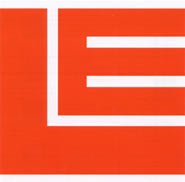
Thomas Dimuzio
Slew
(Gench/RéR)
I’m
gonna admit that, lately, something peculiar keeps happening to me:
while listening to a record, I find myself absently staring into the
void, then asking myself this question: "who could be the right
listener for this album?". (Being aware that times have indeed
changed makes it difficult for me to ask "who could possibly buy
this album?", the "listener" already being an increasingly
rare specimen.) This thoughts occur to me a propos of different musical
"genres", but definitely when it comes to "electronic
music". On one hand, in fact, fans of the "genre" are
not a few. But the trends that I increasingly see as prevailing (in
a numerical sense) are those that keep an eye (or maybe two) on the
dancefloor; and those that – thanks to increasingly powerful laptops
– mix image and sound; both tend to negate the importance of musical
research and experimentation – exactly those traits that have always
represented the promise that electronic means of music making have to
keep. This, in a market where the (over)abundance of available titles
is definitely not demand-driven!
Not
exactly a hardcore fan, but definitely more than a passer-by, I have
to say that I liked this recent compilation by Thomas Dimuzio, an American
musician whose recorded output had not previously been unknown to me
but whom I had really appreciated for the first time with the release
of Quake (1999) and Dust (2002), the two albums he recorded with "electrified
drummer" Chris Cutler. Here Dimuzio demonstrated he possessed uncommon
musical qualities – and fast reflexes – in a conversation where he synthesized,
sampled and treated with a good sense of direction.
Subtitled
A Compilation Of Compilation Tracks 1990-2004, Slew assembles tracks
recorded by Dimuzio for inclusion on miscellaneous CDs. Though quite
some time separates the earliest tracks here from the most recent, finding
a clear stylistical thread is not too difficult. Dimuzio has sampled
and processed a variety of materials, all mentioned in the booklet’s
inner spread. Coming from the (I suppose) already familiar Transforms:
44 Nerve Events Project, Never Steven uses Doctor Nerve fragments, while
the following track, Radiotraces, which starts with the easily recognizable
cello played by the sadly departed Tom Cora, was originally featured
in the memorial album titled Hallelujah Anyways.
To
put it in a nutshell, I’d say Dimuzio is easily at his best when creating
"drones", or when exploring the "elementary details"
of an evolving situation. His way of assembling materials is elastic
enough as to leave the listener some freedom, but not so much as to
give him the whole responsibility of finding meaning in the music. Old
tracks such as Lightswitch (1990), with its rare use of vocals, and
Zosz (’91), are good. I also found both Usher Substart and 4 Poles,
the latter with the ghostly echo of ragtime piano, quite convincing.
The beautiful drones of Hinge Map Ridge and Zero Tolerance are, in a
way, the peaks of the album. I was left unconvinced by the brief more
rhythmic tracks that appear at the end of the album.
Beppe Colli
© Beppe Colli 2004
CloudsandClocks.net | Oct. 19, 2004


